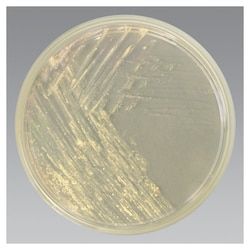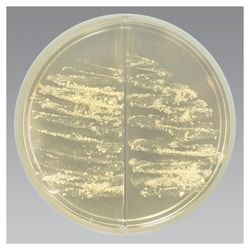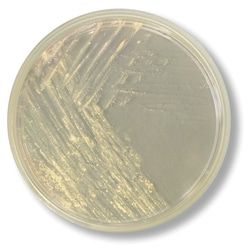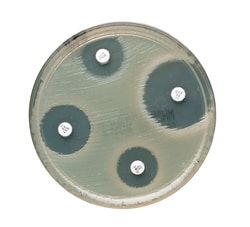R01606
Thermo Scientific™ Middlebrook 7H11 Agar
Manufacturer: Thermo Scientific™
The price for this product is unavailable. Please request a quote
Description
Middlebrook 7H11 Agar Thin Pour
Format
10mm x 100mm Spacesaver Plate
Product Type
Agar
Quantity
15/Pk.
Related Products
Description
- Rapidly detect and isolate Mycobacterium species using the microcolony method with Thermo Scientific™ Remel™ Middlebrook 7H11 Agar Thin Pour
- Middlebrook 7H11 Agar Thin Pour medium is recommended for rapid detection of Mycobacterium spp., particularly unusually fastidious strains of tubercle bacilli which develop after treatment of tuberculosis with secondary antituberculosis drugs
- The thin pour of this medium facilitates rapid detection of mycobacteria with the microcolony method
- The technique for early detection of mycobacteria on solid media using a reduced pour Middlebrook 7H11 Agar plate was developed by Welch et at
- in 1992 4,5
- Inoculated plates were sealed, incubated, and examined microscopically at regular intervals for the appearance of microcolonies
- Use of this method has been shown to reduce the detection time for a positive culture to an average of 11 days
- Additionally, species recognition and the presence of mixed infections based on microscopic colony morphology was shown to facilitate implementation of identification testing
- This medium contains casein hydrolysate which stimulates growth of drug-resistant Mycobacterium tuberculosis strains and inorganic salts essential for the growth of mycobacteria
- Glycerol acts as an energy source
- Sodium citrate gets converted to citric acid that holds inorganic cations in the solution
- Malachite green dye acts as a selective agent
- Supplemental OADC Enrichment contains sodium chloride that maintains osmotic equilibrium, dextrose as an energy source, catalase to destroy toxic peroxides that may be present in the medium, oleic acid which is a fatty acid that is utilized in the metabolism of mycobacteria, and albumin that protects tubercle bacilli against toxic agents.






